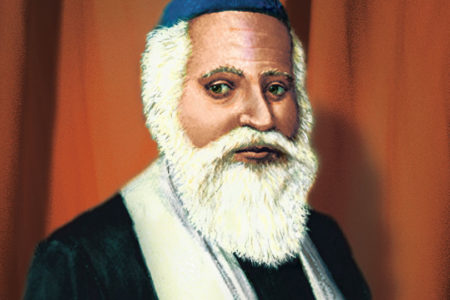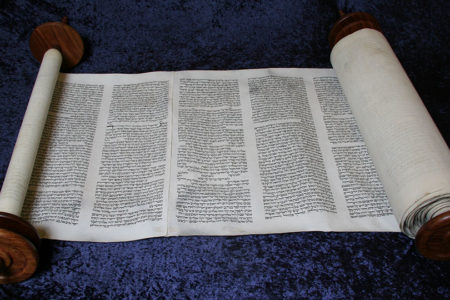Mary Magdalene: Setting the Record Straight
Seventeenth-century philosopher Joseph Hall once said, “A reputation once broken may possibly be repaired, but the world will always keep their eyes on the spot where the crack was.” How true.
Worse yet, some reputations are destroyed deliberately by people who delight in turning today’s noble prince into tomorrow’s filthy criminal. No one’s good reputation is immune from degradation, and, unfortunately, few people actually worthy of contempt get what they deserve.
How would you feel if you lived an upright, honorable life, only to have people say after your death that you were a no-good, lying philanderer? I imagine you wouldn’t like it. And I suppose if Mary Magdalene knew what was said about her these days, she wouldn’t like it either.
For some reason, Mary has been singled out for especially nefarious treatment. She has been called a prostitute, a “terrible sinner,” and the disciple “whom Jesus loved” (we all know that was said of John because of his intense spirituality, Jn. 21:20–24). Mary also has been accused of being the Lord’s physical love interest, His wife and mother of His children, and the list goes on. Her name has been unjustifiably sullied in the most vicious ways, and now a popular novel has only made things worse.
But there is always a method to Satan’s madness. By destroying Mary Magdalene’s reputation, he believes he can destroy the Lord’s as well. By convincing people that Jesus (1) was a mere mortal and/or (2) that He had a physical relationship with a woman, he can keep unbelievers imprisoned in his kingdom of darkness forever.
So here is one more attempt to set the record straight. Who was Mary Magdalene? Why is she significant? What does Scripture say about her, and what does it not say?
Since Matthew is the first book of the New Testament, Mary first appears there, in 27:56, after Jesus yielded His spirit on the cross:
And many women who followed Jesus from Galilee, ministering to Him, were there looking on from afar, among whom were Mary Magdalene, Mary the mother of James and Joses, and the mother of Zebedee’s sons (vv. 55–56).
The name Magdalene refers to Mary’s hometown, Magdala (from the Hebrew for “tower”) near Tiberias in Galilee, an extremely wealthy but corrupt city noted for its woolen textiles and dyes.1 The text implies these women had sufficient financial means to provide for Jesus when He ministered in Galilee. So Mary Magdalene probably had money. Scholar Herbert Lockyer referred to her as a “woman of high standing and comfortable circumstances.”2 Nowhere does the text say she was a prostitute. Wrote Lockyer, “There is not an iota of genuine evidence to suggest such a bad reputation.”3
And she traveled in good company. Mary “the mother of James and Joses [Joseph]” was the wife of Clopas, whom the risen Savior met on the road to Emmaus (Jn. 19:25; cf. Lk. 24:13, 18). The “mother of Zebedee’s sons” was Salome, the Virgin Mary’s sister and the apostle John’s mother (Mt. 10:2; Mk. 15:40; Jn. 19:25). Salome’s husband, Zebedee, was a wealthy fisherman. Thus Salome was Jesus’ aunt; the apostle John, His cousin. When Jesus looked down from the cross and told John, “Behold your mother!” He was instructing John to care for His mother—the apostle’s Aunt Mary (Jn. 19:27). Scripture says the apostle John immediately “took her to his own home” (v. 27), which explains why she is listed among the women at the cross in John 19:25 but is absent from the lists in the other Gospels when Jesus actually died.
Clearly, Mary Magdalene was a close friend of the Lord’s mother, her sister Salome, and Clopas’s wife—all older women. Nothing in the text suggests she was younger than they. For all we know, she was the age of Jesus’ mother and had grown children. Scripture does not give her age. It does not comment on her looks. It does not say whether she was married or if she had a family. Nor does it render a single shred of support to the theory that she was a pretty young woman whom the Lord found attractive, much less to the blasphemy that He had a physical relationship with her.
It does say the 12 apostles and certain women traveled with Jesus as He preached the Kingdom of God. These women had been “healed of evil spirits and infirmities—Mary called Magdalene, out of whom had come seven demons, and Joanna the wife of Chuza, Herod’s steward, and Susanna, and many others who provided for Him from their substance” (Lk. 8:2–3). Mary obviously had given her life to Christ after she was healed, faithfully followed the Lord, and helped finance His ministry, as did the other women.
But unbelievers forge ahead, determined to destroy her reputation and even imply she had an illicit relationship with Jesus or, as Dan Brown’s novel The Da Vinci Code claims, married Him and bore His children. Some use John 20:1–17 to prop up their arguments. That passage says Mary came to the tomb in the dark, failed to find Jesus, wept, then saw Him standing there. He spoke her name; she recognized Him; and He told her, “Do not cling to Me” (v. 17). These few verses do not a case make, particularly when the Gospel of Matthew says she went with “the other Mary [Clopas’s wife]” (28:1); Mark says she went with Clopas’s wife and Salome (Mk. 16:1–2); and Luke says Joanna, Clopas’s wife, and other women also were there (Lk. 24:10). Bible scholar Alfred Edersheim explained:
Her report to Peter and John [Jn. 20:2]: ‘We know not where they have laid Him,’ implies that she had not gone alone to the Tomb….Whether or not there were two groups of women who started from different places to meet at the Tomb, the most prominent figure among them was Mary Magdalene—as prominent among the pious women as Peter was among the Apostles. She seems to have first reached the Grave.4
More important, however, was that Mary of Magdala was the first person to see the risen Savior (Mk. 16:9). And therein lies the rub. There is little Satan hates more than the truth of the resurrection of the Son of God. It is the resurrection that sealed his doom, stripped him of his power of death, and guaranteed his everlasting torment in the Lake of Fire and Brimstone (Heb. 2:14-15; Rev. 20:10). Hence, he has spent millennia using every trick in his bag to discredit Mary Magdalene. This devout, committed, faithful woman of God has become an object of the evil one’s lies and hate because she received the unparalleled privilege of becoming the first person to testify to the bodily resurrection of Jesus the Messiah and, thus, to Satan’s defeat.
Sadly, many people have swallowed Satan’s lies. And as the world degenerates, their number will increase. But a day will come when Mary’s reputation will be repaired completely, and no one will see the “crack” Satan manufactured. In that day, everyone will be too busy looking, as she first did, at the risen Savior. And every knee will bow and every tongue confess “that Jesus Christ is Lord, to the glory of God the Father” (Phil. 2:10–11).
ENDNOTES
- Alfred Edersheim, The Life and Times of Jesus the Messiah, bk. 3, From Jordan to the Mount of Transfiguration (n.p.: Hendrickson, 1993), 393–94.
- Herbert Lockyer, All the Women of the Bible (Grand Rapids: Zondervan, n.d.), 100.
- Ibid.
- Edersheim, 907–908.







